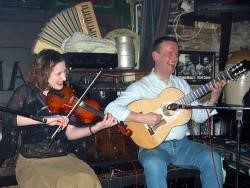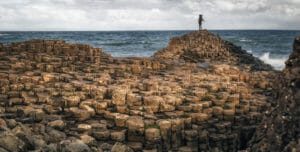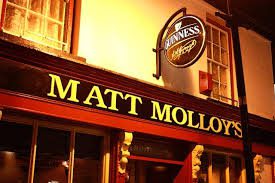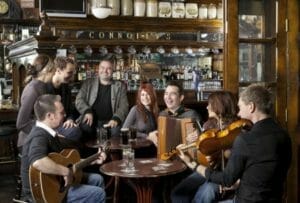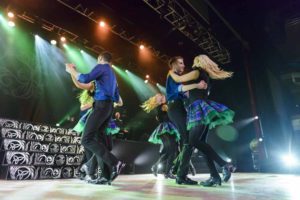Irish Traditional Music-A Short History
Irish Traditional Music is known today throughout the world.
It is an oral tradition and its prolific nature has captured the attention of listeners everywhere. Though it is only in the past few decades that Irish Music has gained such recognition on an international scale, its origins can be traced back to almost two thousand years ago when the Celts arrived in Ireland.
They brought with them, among other skills and crafts, music. Having been established in Eastern Europe since 500BC, the Celts were undoubtedly influenced by the music of the East, and indeed, it is speculated that the Irish Harp originated in Egypt. While travelling to Ireland, the Celts left their mark on the musical cultures of Spain and Brittany (Northern France) as well as in Scotland and Wales. However, it is here in Ireland that the tradition has evolved most articulately, thrived most strongly and survived most courageously.
The harp is best known of all the traditional Irish instruments and was most dominant from the Tenth to the Seventeenth Centuries. In the Nineteenth Century it evolved into the Neo-Irish Harp which, in structure, is much like that of the classical concert harp. Before the Seventeenth Century, the harp tradition was at its height and all the harpists were professional musicians. The ruling Chieftains employed them, under a system of patronage, to compose and perform music.
The tradition enjoyed a steady and secure status under this arrangement. However, in 1607 the Chieftains fled the country under pressure from invaders. This came as a serious blow to the professional harpists and the tradition as a whole. They no longer held the title of professional musician and were now called “travelling” or “itinerant” harpists. Turlough O’Carolan is the best remembered of the harpists during this period and many of his compositions are still played by traditional musicians today.
The first written collection of Irish music appeared in 1762, containing 49 airs and published by Neale brothers in Dublin. However, it was not until the Belfast harp festival of 1792 that the most significant notation of Irish music was made by Edward Bunting.The manuscripts survive to this day and are among the most important documents in the history of the tradition.
Just as the flight of the Chieftains in 1607 affected the harping tradition, attempts at colonization adversely affected Irish culture in the decades following the initial invasion. Many of the laws introduced by the British crown were aimed at crushing the Irish culture and, in the case of the penal laws, it was forbidden to participate in any traditional or cultural activities. Many would believe that such laws were to some extent successful in suppressing the hampering the growth of music in Ireland during the period of their enforcement.
Due to the Great Famine of the 1840’s, one million people died and there is no doubt that much of the tradition in the form of songs, stories and tunes, died with them. The subsequent wave of emigration, of over two million people, which accompanied the Famine, though a devastating factor in Irish life, did help to bring the music tradition further afield.
Thousands of Irish people were spread across the world from the USA to Australia. On leaving Ireland, the immigrants brought with them their songs and music and a traditional Irish music network was quickly established in cities such as New York, Chicago and Boston where there was a concentrated Irish population.
By the 1920’s, recordings of a number of Irish musicians were being made in the USA, most notably the fiddle players Michael Coleman, James Morrison, Paddy Killoran and the Uilleann Piper, Patsy Tuohey. When these 78-RPM recordings made their way back to Ireland they had a dramatic effect on the tradition here. To the surprise of the listeners, piano accompaniment was given to the fiddle and uilleann pipes and the dance tunes were played at a quickened pace.
As a result of these recordings, musicians in Ireland also began to speed up the tempo of the tunes as well as using the piano as an accompanying instrument, an idea previously unheard of in the tradition.
Up to the 1960’s, Irish music still had as its main setting the houses and pubs of rural areas, and music was played mainly to be danced to. It was not until Sean O’Riada’s involvement in the tradition that the music found a wider audience. O’Riada had a wide knowledge of Western Art Music and while working as a music lecturer at University College Cork, he became aware of Irish traditional music.
As his interest in it grew he began to explore it in greater depth. He set up a band of traditional musicians in the early 1960’s called Ceoltoiri Chualann, with the aim of creating a new music built on the tradition.
He made use of many Classical music forms within the workings of the band which was made up of fiddle, flute, uilleann pipes, accordion and bodhrán, and came up with a formula of playing solos within the group. His music was played to be listened to and not danced to, thus bringing the music across a social divide. It was no longer associated solely with rural areas and poverty.
When Ceoltoiri Chualann performed their first concert, it did not take place in a public house or a concert hall but in the grandeur of the Gaiety Theatre in Dublin. O’Riada created the concept of an Irish music ensemble, which gave rise to the whole idea of arranging the music.
As the 1900’s were to become known as the traditional music revival, the 1970’s were to earn the title the golden age of traditional music, and not without good reason, for it was in this decade that the music saw possibly its finest years in term of popularity and innovation. Probably the most obvious development was the espousement of influences such as contemporary, American and European folk, into traditional music and with the arrival of the group Planxty in 1972, a new sound had emerged.
The arrangements of pure traditional music in folk and ballad style, played with the virtuosity of Liam O’Flynn’s uilleann piping, along with the intricately captivating bouzouki, mandolin and guitar accompaniment, created a sound that was to prove them as the leader in a new musical movement, and to play a vital part in the inspiration for many groups, too numerous to mention here, that formed around this time. They were the prototype for what was to be arguably the most influential and ground-breaking band during the period and possibly to date for it was the Planxty man, Donal Lunny, who in 1975 formed The Bothy Band.
This professional group, characterised by a powerful core of pipes, flute and fiddle with a driving rhythmic accompaniment, not unlike that of rock music, played on bouzouki, guitar and clavichord, achieved one of the most exciting combinations of traditional music talents ever gathered. Their greater use of harmony and occasional interdependence of instruments: their more intricate use of O’Riada’s model of arrangement: their professional rock-group like approach to performance and mainly their master musicianship and explosive sound, all served to win them the imagination of a new generation the world over.
The Bothy Band’s influence from their heyday to the present is undiminished. It is because of bands such as De Dannan, Planxty and perhaps mainly the Bothy Band, that certain traditional musicians can stand alone on stages throughout the world and be appreciated and acclaimed for playing in their own pure style.
Since the ‘70’s, many interesting ventures in new areas have been attempted, such as the traditional rock-fusion initially tempted by Moving Hearts: experimentation with the arrangement of traditional
instruments with orchestras: the attempted fusion of traditional music with world music and jazz, etc. All these developments are notable in their own right and have served to popularise the music, contributing to the apparent situation today where it is seen to be thriving.
But if we were to study how music is performed at the present time, one would notice some dramatic changes: (1): more attention to tone and technique: (2) : material acquired from public performers as opposed to one specific region: (3): an increase in the tempo of dance tunes: (4): a greater awareness of harmony and (5): the acceptance and popularity among traditional players of accompaniment instruments such as the Greek bouzouki which has been adapted in style and structure thus further increasing its versatile ability.
Now, in the twenty-first century, with traditional music enjoying every success, it would seem as if its future is secure, but today more than at any other time, this is the foremost topic of debate among musicians and commentators.
Through the profusion of media, the influence of groups and individual musicians filtering back into the tradition is viewed with great concern by many as corrupting and detracting from the essential purity and integrity of traditional music. Indeed, it has been recognised that with few exceptions, regional styles have, since the advent of recording, been eroding at a frightening rate and are almost completely erased.
But to conclude, it should be simply stated that never before has Ireland seen so many young and talented traditional musicians and singers. I can see no reason why traditional music in its purest form is coming under threat. Music, traditional or otherwise, lives in its musicians and therefore must be relevant to this generation.
If it’s not, we will have failed to keep it alive for the next. With one eye on the past and one on the future, traditional music knows no boundaries and will continue to reflect the nation’s spirit for generations to come.
Benny O’ Carroll


